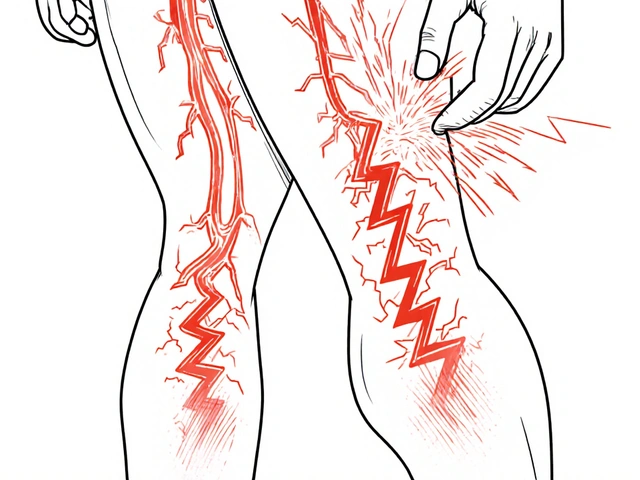Tetracycline: What It Is and How It Works
If you’ve been handed a bottle of tetracycline, you might wonder what you’re actually taking. In plain terms, tetracycline is an older‑style antibiotic that stops bacteria from growing. It’s not a painkiller, it’s a bug‑killer, and doctors use it for things like acne, respiratory infections, Lyme disease, and certain stomach bugs.
The drug gets into the bacteria’s cells and blocks a protein‑making process they need to survive. Because it targets a basic function, it works on a wide range of bacteria. That’s why it shows up in many treatment plans, but it also means you need to follow the rules to keep it effective.
When Doctors Prescribe Tetracycline
Typical scenarios include:
- Moderate to severe acne that hasn’t responded to topical creams.
- Community‑acquired pneumonia caused by atypical bacteria.
- Rickettsial infections like Rocky Mountain spotted fever.
- Travel‑related diarrhea from certain bacteria.
- Prophylaxis for malaria (in some countries).
Doctors choose tetracycline when they need a broad‑spectrum option that’s cheap and well‑studied. If you’re pregnant, nursing, or under eight years old, they’ll pick something else because tetracycline can affect bone growth and teeth staining in young kids.
How to Take It Right
Follow the prescription to the letter. Common dosing is 250 mg to 500 mg every 6‑8 hours, taken on an empty stomach. That means you should swallow the pill with a full glass of water at least one hour before meals or two hours after. Food, especially dairy, can bind the drug and cut its absorption, making it less effective.
Never crush or chew extended‑release tablets; doing so can release the whole dose at once and raise the risk of stomach upset.
Tips to Minimize Side Effects
Side effects are common, but most are mild. You might notice nausea, upset stomach, or a temporary rash. To keep these in check:
- Take the medicine with plenty of water – at least 8 oz.
- Avoid dairy, calcium supplements, antacids, and iron within two hours of dosing.
- Stay hydrated. Dehydration can worsen stomach irritation.
- If you develop a sunburn‑like rash, stay out of direct sunlight and use sunscreen. Tetracycline can make your skin more photosensitive.
- Don’t use it longer than prescribed. Prolonged use can lead to fungal overgrowth or antibiotic resistance.
Serious reactions are rare but need immediate attention: severe diarrhea, blood in stool, or signs of an allergic reaction (hives, swelling, trouble breathing). Call your doctor right away if any of these appear.
Drug Interactions You Should Know
A few medicines don’t play well with tetracycline. Antacids containing aluminum or magnesium, vitamin D, and iron supplements can lower its effectiveness. Blood thinners like warfarin may have their effect boosted, raising the risk of bleeding. If you’re on any chronic meds, let your prescriber know so they can adjust doses or pick a different antibiotic.
In short, tetracycline is a handy, affordable antibiotic when used correctly. Stick to the dosing schedule, keep it away from food and calcium, watch for skin sensitivity, and be aware of interactions. When you do that, you’ll give the drug the best chance to clear up the infection and keep side effects to a minimum.



